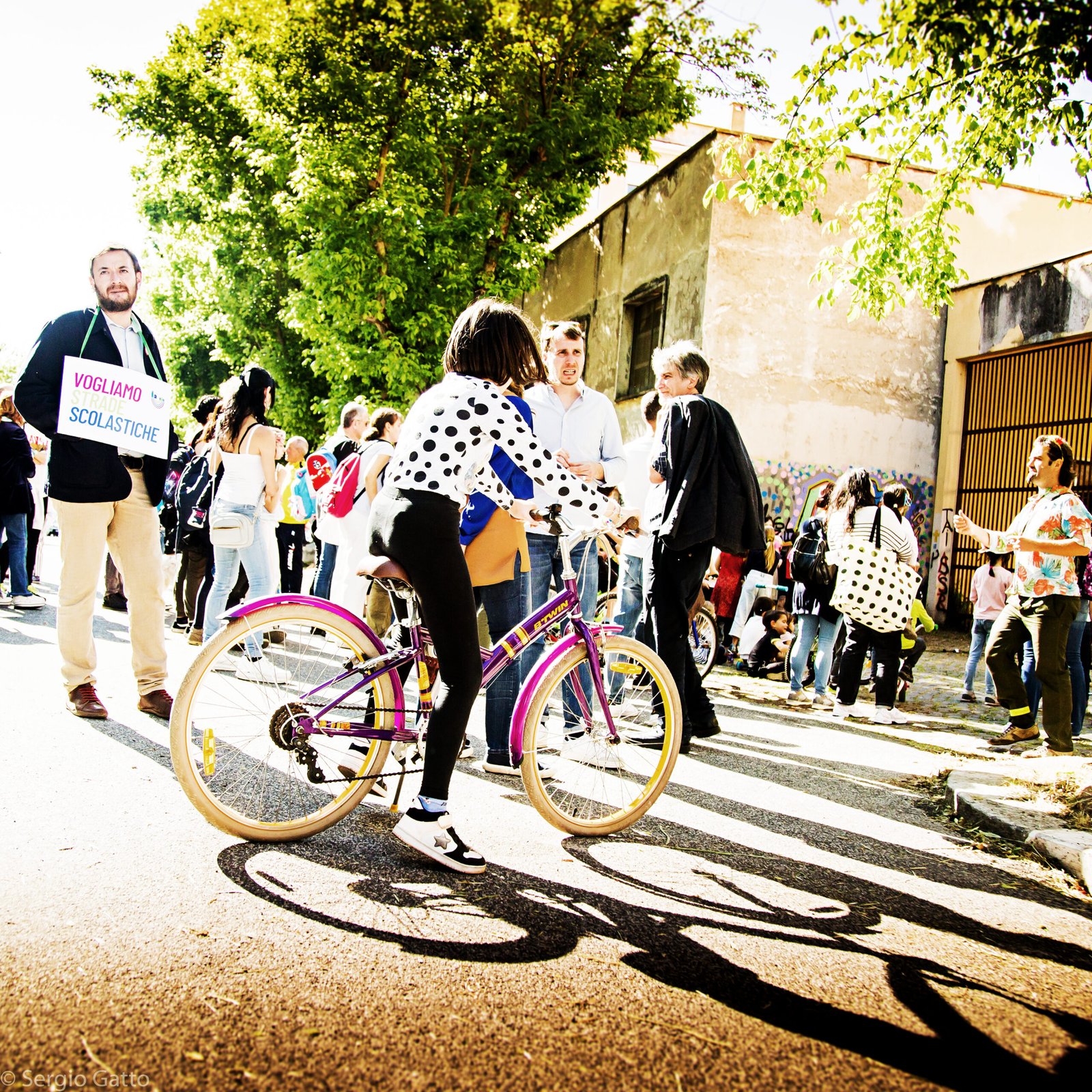
Survey
Children in Italy want School Streets!
May 1, 2024
We asked children in Italy how they’d like to travel to school and what the streets around their schools should look like.
This is what they told us...
We conducted a survey asking children in Italy about their journeys to and from school and what changes they’d like to see to the streets around their schools.
Disappointingly, the results showed that most children were being driven to school…
…BUT, the good news is that many of them want that to change.
Read on to see the results 👇
"How do you currently travel to school?"
Across the age ranges that we surveyed, we found that travelling to school actively (by walking, cycling or scooting) was never the most popular option.
Younger children tended to be driven to school but, as they get older (and more independent), there is a gradual positive shift from being driven to taking public transport.
Age vs. mode of transport
(The chart below shows the percentage of different age groups in Italy travelling to school via different modes of transport)
The regional breakdown is interesting, too, with children in Italy’s centre, south and islands being more likely to be driven to school than those in the north east and north west.
Though being driven also comes out on top in the north east and north west, there’s a much more even split between driving vs. public transport vs. active travel.
Region vs. mode of transport
(The chart below shows the percentage of children in Italy across different regions travelling to school by different modes of transport)
"How would you like to travel to school?"
What’s really clear to see is that most children would like to be travelling to school in more sustainable ways, such as by walking, cycling, or scooting.
As shown in the chart below, at the time of the survey only 28% of children were walking, cycling or scooting to school – BUT, 50% of them said that they would like to.
The question is… how can we make this a reality?
How children currently travel to school vs. how they’d like to travel to school
"What changes would you like to see in the streets around your school?"
Only 3% of those surveyed said that they were happy with the streets around their school and wouldn’t ask for any changes to be made. 48% said that walking or cycling to school feels too dangerous.
When asked what changes they would like to see around their school, lots of children asked for fewer cars and less traffic, more trees and green space, more playgrounds, more (and safer) cycle lanes, and wider pavements.
One way of increasing safety and, in turn, increasing the amount of children travelling actively to school is… School Streets!
What is a school street?

School Streets are where pedestrians and cyclists are prioritised in the roads around schools at drop-off and pick-up times. And, in some places, the roads around schools are closed to motorised traffic entirely!
This makes it safer for children to walk or cycle to school, provides more space for play, and helps to improve air quality.
Why should this generation of children be sacrificed to toxic air and the danger of a road traffic collision? We know that School Streets can transform the spaces around school and help families make different choices about how to get to school. It’s time we saw action on delivering them.
Anna Becchi - Streets for Kids Campaign Lead
“Would you like to have a School Street in front of your school?”
According to our survey, it’s a big YES to School Streets in Italy! But, unfortunately, only 7% of children currently have access to one.
88% of children in Italy would like a School Street...
0%
...but only 7% actually have one
0%
School Streets are a proven and easy to implement intervention that benefits the most vulnerable, our children.
They are building blocks for a more liveable city for everybody. That’s why we are calling for every school, where feasible, to have a school street by 2030.
The building blocks of a School Street
(Share these with your school leaders!)
We want to see School Streets in front of all kindergartens, elementary and middle schools by 2030 at the latest, with intermediate annual targets.
Use this time to engage with residents, schools, parents and children themselves in the definition of the project. Consider short-term, low-cost, scalable interventions to begin with as a way to roll out a temporary School Street.
Limiting hours to only drop-off and pick-up times can work for temporary School Streets but ultimately, most School Streets should become permanent. This will support a lasting change of transport patterns and make enforcement easier.
School Streets require (basic) infrastructure to ensure permanent closure of the street to cars, such as bollards, flower pots, barriers. Some of these can be built locally, such as the ‘Wikiblocks’ used in Toronto.
Engage parents who drive on the benefits of School Streets. Consider incentivising and promoting autonomous initiatives by parents and teachers, such as bike to school days.
It is essential that the way to school be safe, which usually also requires infrastructure improvements. Appointing mobility managers for each school (district) should also be considered to act as a link between residents and the school community on the one hand, and city hall and the local transport authority on the other.
*This survey was conducted by YouGov on behalf of the Clean Cities Campaign. The total sample size was 1,017 children aged 6-17 in Italy. Fieldwork was undertaken between 13th – 20th April 2023. The figures have been weighted and are representative of Italy children aged 6-17.
FIND OUT MORE ABOUT SCHOOL STREETS
(P.s. Did you know, we're mobilising parents, teachers and children across Europe to call for more School Streets, and you can join us!)





